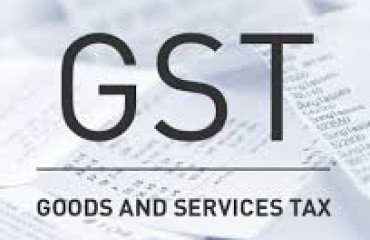
NEW DELHI: Giving a thumbs up to the GST regime, 90% Indian CXOs across key sectors have backed this technologically driven indirect tax regime. Industry leaders are of the view that ‘one nation, one tax’ reform has certainly brought down barriers across the country and made doing business easy and effective for both businesses and taxpayers. The GST regime has positively affected the prices and costs of goods and services to end consumers, along with helping companies optimise their supply chains. These insights and more came out in the Deloitte GST@5 Survey 2022.
Story outline
- The foundation of the GST regime is based on technology.
- The introduction of GST gave a push to Indian companies to upgrade their technological infrastructure.
- 80% leaders believe that the government has done well in automating tax compliances.
- 74% believe that government should continue to work on simplifying the tax system to enhance the EoDB.
NEW DELHI: Giving a thumbs up to the GST regime, 90% Indian CXOs across key sectors have backed this technologically driven indirect tax regime. Industry leaders are of the view that 'one nation, one tax' reform has certainly brought down barriers across the country and made doing business easy and effective for both businesses and taxpayers. The GST regime has positively affected the prices and costs of goods and services to end consumers, along with helping companies optimise their supply chains. These insights and more came out in the Deloitte GST@5 Survey 2022.
With the completion of half a decade of GST implementation in July, a majority of the industry professionals feel that overall input credit management vis-à-vis GST rules is one of the top issues faced in complying with the GST law. Keeping track of the changing tax landscape and developments ranks as the other key challenge, especially by the consumer and MSME sector. Within the GST law and its compliance, increased tax regulations and reporting demands from tax authorities topped the chart as main challenges. Some ground still needs to be covered as far as implementation efforts go, especially to save one's time and ease taxpayers' burden during audit/investigation proceedings.
In a statement, Mahesh Jaising, Partner and Leader – Indirect Tax, Deloitte Touche Tohmatsu India LLP, said, "The transition to the 'one nation, one tax' reform was introduced to build an end-to-end, technology-based tax ecosystem to lower compliance burden on businesses. The buoyancy in the tax collection in recent months is an indicator of the success that this technologically driven tax reform has brought into the system and reflects the taxpayer-friendly nature of GST regime. It will be interesting to watch new developments coming under the GST space with a decision expected on the extension of GST compensation cess; proposals to increase and scope of GST on online gaming; setting up of the GST tribunal; and GST small seller parity issue."
The foundation of the GST regime is based on technology. The introduction of GST gave a push to Indian companies to upgrade their technological infrastructure. About 80% leaders believe that the government has done well in automating tax compliances and 74% believe that government should continue to work on simplifying the tax system to enhance the EoDB. The automation of tax compliances has brought major synergies and efficiencies compared with the erstwhile regime, following the introduction of a 'one-stop-shop' portal (GSTN) to ensure compliances under GST.
Respondents also believe that the government's continued adoption of progressive concepts, such as e-invoicing and establishing GSTN (which is transcoded with advanced analytical tools to use taxpayer data), has resulted in positive outcomes for businesses and tax authorities. This move has increased transparency and helped control tax evasion in the country.
The launch of GST mandated coordination between tax experts and technology teams in introducing and tweaking ERP software as the GST rules keep updating. 60% respondents stated that upgrading their technology is the most challenging aspect of revamping
. This is followed by existence of multiple systems and lack of a unified system, confirmed 53% industry experts.As GST completes half a decade in July, 59% industry leaders applauded the government's approach of proactively issuing instructions and clarification, and streamlining processes, the survey stated. This move has helped avoid any unnecessary pile up of litigation and unending disputes. While automation of tax compliances emerged as the top area (80%) where the government has helped, upgrading technology remains a key ask (with 61%) requiring the government's attention. In the future, 28% leaders look forward to use high-level automation, with no manual interventions, in their businesses.
The survey further added that the industry looks forward to finding resolution to simplification of input tax credit matching, followed by reducing operational complexities for taxpayers. Industry leaders also consider managing tax disputes and the absence of appellate forums to resolve disputes as significant issues leading to serious long-term ramifications.Download The Economic Times News App to get Daily Market Updates & Live Business News.
